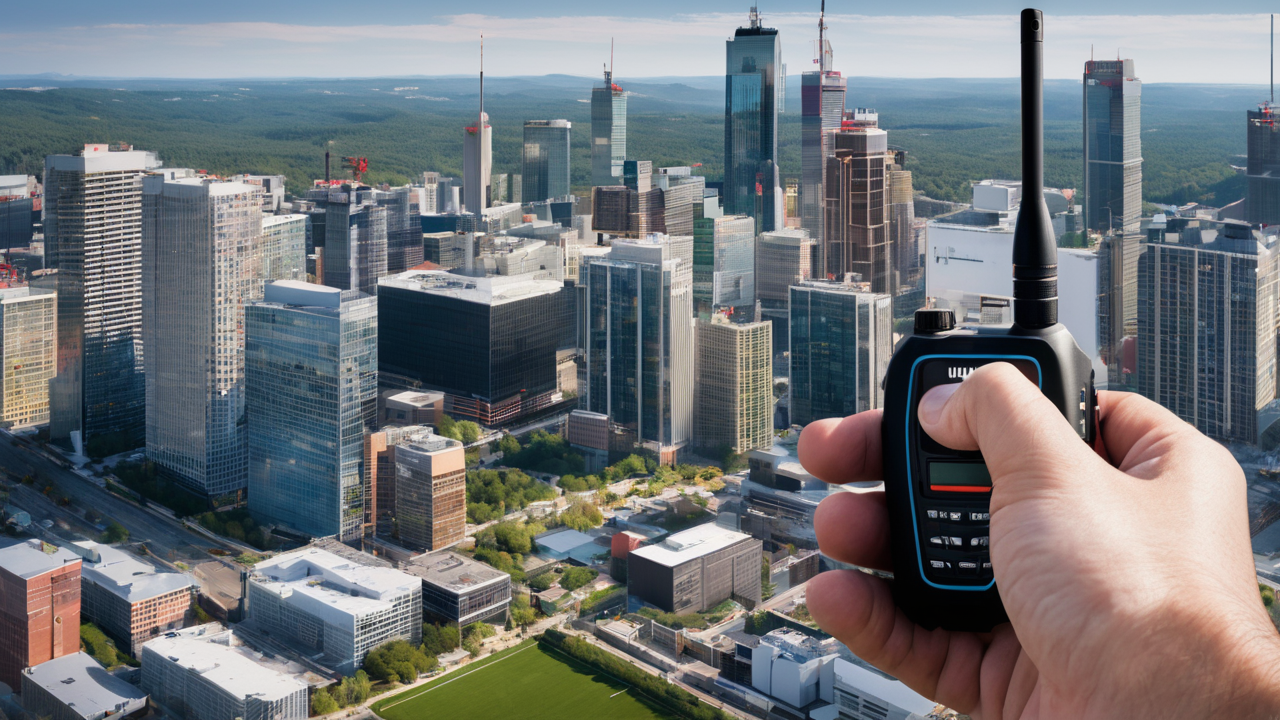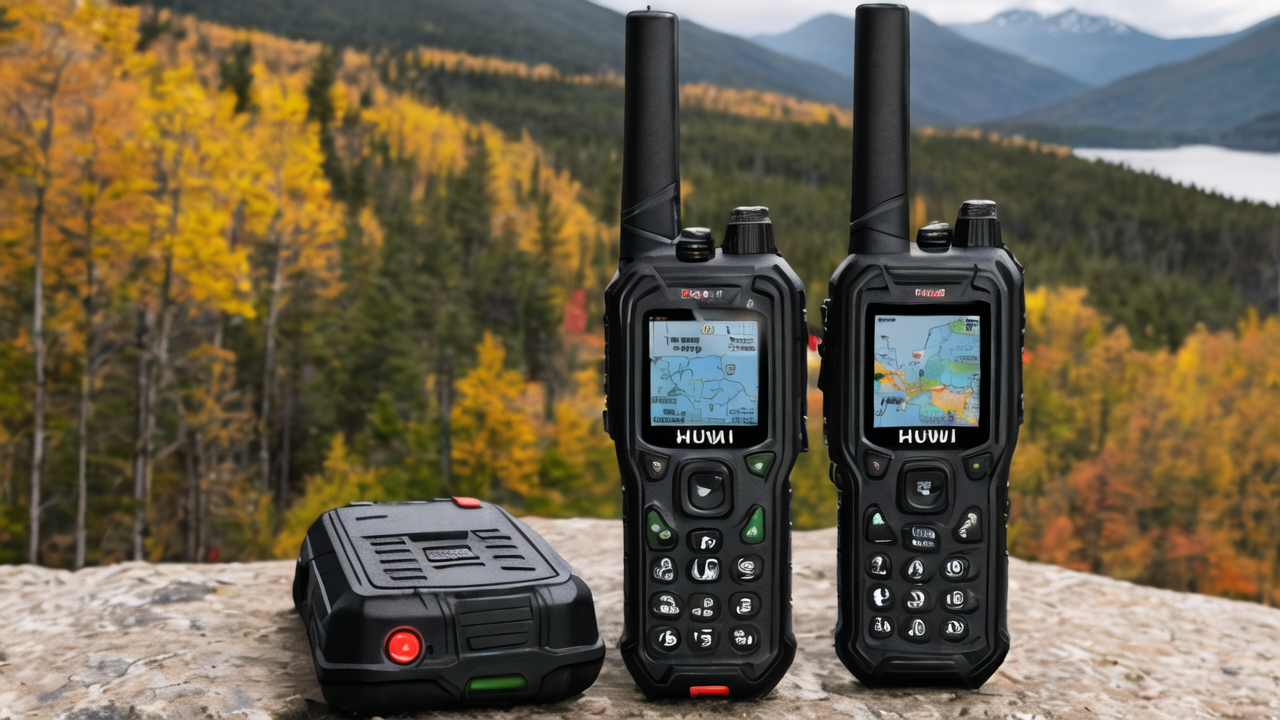Understanding the Technology Behind Long Range Walkie Talkies
The Evolution of Two-Way Radio Technology
Two-way radio tech has come a long way. It started with basic, short-range devices. Now, we have long-range walkie-talkies that can reach up to 100 miles. This progress is due to advances in radio tech and better power sources.

Early walkie-talkies were bulky and had limited range. They were mainly used by the military. Over time, they became smaller and more powerful. Consumer versions appeared in the 1970s. These were popular for outdoor activities.
Today's long-range walkie-talkies use advanced tech. They have better antennas and more efficient power use. Some can even connect to satellites for global coverage. This makes them useful in remote areas where cell phones don't work.
Key Technologies Enabling Long Range Communication
Several key techs make long-range walkie-talkies possible. First is the use of lower frequencies. These can travel farther than higher ones. Many long-range models use the UHF or VHF bands.
Another important tech is digital signal processing. This cleans up the signal, reducing noise. It allows for clearer communication over longer distances. Some models use encryption for secure talks.
Power output is crucial too. Higher wattage means longer range. But this must balance with battery life. Many long-range walkie-talkies use rechargeable lithium-ion batteries. These provide more power for longer periods.
Antenna design is also key. Longer antennas can pick up weaker signals. Some models have extendable antennas for better range. Others use dual antennas for improved reception.
Comparing Long Range Systems: Frequency and Power Specifications
Long-range walkie-talkie systems vary in frequency and power. UHF (Ultra High Frequency) is common for urban use. It's good at penetrating buildings. VHF (Very High Frequency) is better for open areas. It can travel further with less power.
Power output ranges from 0.5 to 5 watts for most consumer models. Higher power means longer range. But it also drains batteries faster. Some professional models can output up to 50 watts.
Frequency also affects range. Lower frequencies can travel further. But they require larger antennas. Higher frequencies need less power. But they're more affected by obstacles.
Some systems use repeaters to extend range. These receive and retransmit signals. This can greatly increase the effective range. But it requires setting up additional equipment.
Long Range Walkie Talkies: Applications and User Cases
Emergency Services and Public Safety
Long-range walkie-talkies are vital for emergency services. They provide reliable communication in crisis situations. Police, fire departments, and rescue teams all rely on them.

These devices work when cell networks fail. This is crucial during natural disasters. They allow coordination between different agencies. This improves response times and saves lives.
Many models are rugged and waterproof. This makes them ideal for harsh conditions. Some have GPS features for location tracking. This helps in search and rescue operations.
Emergency services often use specialized frequencies. These are reserved for official use. This ensures clear channels during emergencies. Some systems can integrate with other communication networks.
Strategic Use in Military Operations
The military heavily relies on long-range walkie-talkies. They are used for tactical communication in the field. These devices are often more advanced than civilian models.
Military walkie-talkies often have encryption features. This prevents enemy interception. They may also have frequency hopping capabilities. This makes the signal harder to detect or jam.
These devices are used for coordinating troop movements. They allow communication between ground forces and air support. Some models can integrate with other military systems.
Durability is key for military use. These devices must withstand extreme conditions. They often have long battery life for extended missions. Some can even be powered by solar panels.
Leisure and Outdoor Enthusiasts
Long-range walkie-talkies are popular among outdoor enthusiasts. They're used by hikers, campers, and hunters. These devices work in areas with no cell coverage.
They're great for group activities. Friends can stay in touch over long distances. This is useful for coordinating meet-up points or sharing information.
Many models are compact and lightweight. This makes them easy to carry on long trips. Some are designed to clip onto backpacks or clothing.
Features like weather alerts are common in outdoor models. This helps users stay safe in changing conditions. Some have built-in flashlights or SOS signals for emergencies.
Legal and Regulatory Considerations in the United States
FCC Regulations for Long Range Walkie Talkies
The FCC regulates the use of long-range walkie-talkies in the US. They set rules for frequency use and power output. These rules ensure fair use and prevent interference.

Most consumer walkie-talkies use the Family Radio Service (FRS) or General Mobile Radio Service (GMRS). FRS doesn't require a license. GMRS does require a license for higher power output.
The FCC limits the maximum power output for these devices. This varies depending on the frequency band. They also regulate the types of antennas that can be used.
Some frequencies are reserved for specific uses. For example, certain bands are for emergency services only. Using these without permission is illegal.
Implications for Consumer Use
Consumers need to be aware of FCC rules when using long-range walkie-talkies. Using a device incorrectly can result in fines. It's important to stay within legal power limits.
For most casual users, FRS devices are sufficient. These don't require a license. But they have limited range and features. GMRS offers more power and range. But it requires a license.
Users should respect others' privacy when using these devices. It's illegal to listen in on private conversations. It's also important to yield the channel to emergency communications.
Some areas may have restrictions on walkie-talkie use. This includes national parks and some urban areas. Users should check local regulations before use.
Compliance for Manufacturers and Retailers
Manufacturers must ensure their products meet FCC standards. This includes power output and frequency accuracy. They must submit their devices for FCC certification.
Retailers are responsible for selling compliant devices. They should inform customers about licensing requirements. This is especially important for GMRS devices.
Product labels must clearly show FCC compliance. They should also indicate if a license is required. Manufacturers must provide user manuals with FCC guidelines.
Some features, like voice scrambling, are restricted. Manufacturers can't sell devices with these to the general public. They're only allowed for certain professional uses.


